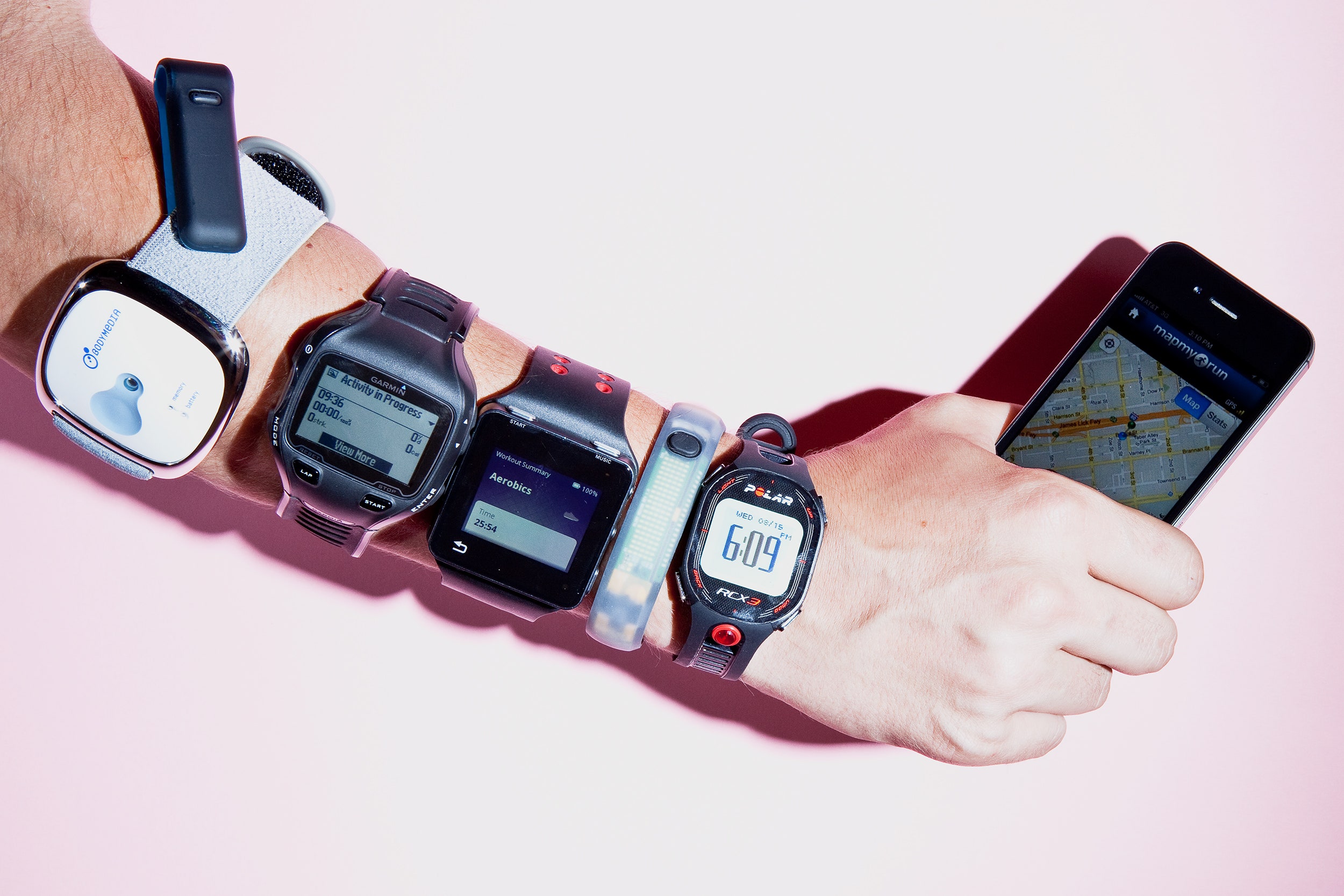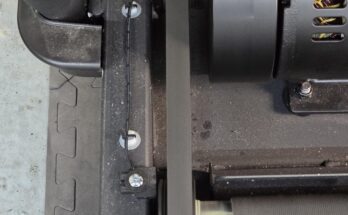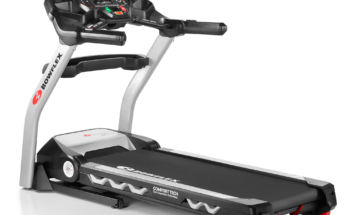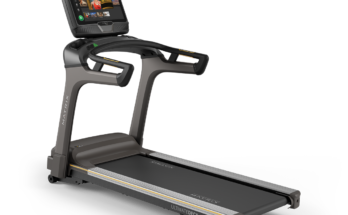Calorie counters on treadmills are not always accurate. They often provide estimates rather than precise measurements.
Understanding the accuracy of treadmill calorie counters is crucial for those tracking their fitness progress. While treadmills are a staple in fitness routines, the calorie count displayed can sometimes be misleading. These built-in calculators take a generalized approach, factoring in the user’s weight, the time spent exercising, and the intensity of the workout.
However, they lack personalized data on metabolism and body composition, which can significantly affect calorie burn. For individuals aiming to monitor their exercise efficiency or those on a weight management journey, knowing the limitations of these counters allows for informed adjustments to their fitness strategies. Consistency in exercise habits and complementary tracking methods, like heart rate monitors or fitness apps, can paint a more accurate picture of the calories expended during treadmill workouts.
The Quest For Accurate Calorie Counts
Engaging in regular workouts, we often rely on treadmill calorie counters for feedback. Yet, how precise are these digital companions? The pursuit of an exact calorie burn count pushes manufacturers to refine their formulas. But users should remain aware of potential discrepancies.
Calorie Counting: A Brief History
Calorie counting has evolved significantly. Initially, it was a pen-and-paper exercise. Now, high-tech treadmills estimate calorie expenditure in real-time.
- Early 1900s: Calorie counting began alongside the rise of dieting culture.
- 1970s: The first home treadmills introduced calorie tracking as a key feature.
- Present Day: Treadmills use complex algorithms involving weight, age, speed, and heart rate.
Common Myths About Calorie Counters
Understanding these myths can encourage a more informed fitness journey.
| Myth | Fact |
|---|---|
| All treadmills show the same calorie count. | Calorie counts vary based on the algorithms used by different brands. |
| You can’t improve the accuracy. | Inputting precise user data can enhance the calorie count’s accuracy. |
| Fitness metrics are universal. | Fitness metrics should be tailored to individual health and fitness levels. |
By recognizing these myths, fitness enthusiasts can better leverage treadmill data. Your focus? Use the data as a guide, not an absolute measure. For a more comprehensive calorie count, consider additional factors like muscle mass and fitness level.

Credit: www.treadmill.run
How Treadmills Estimate Calories Burned
When stepping onto a treadmill, many fitness enthusiasts glance at the calorie counter to track their progress. Treadmills estimate the number of calories burned during a workout session, but just how accurate are these figures? To understand this, it’s crucial to learn about the algorithms these machines use and the factors that can affect their precision.
The Role Of Algorithms In Calorie Measurement
Treadmills employ complex algorithms to approximate the energy expenditure of users. These algorithms are based on standard formulas that factor in speed, time, incline, and user input data such as weight and age. Some high-end models may even consider heart rate to provide a more personalized calorie count.
Factors Influencing Calorie Count Accuracy
Several factors play a role in the accuracy of the calorie counters on treadmills. Here’s a breakdown of the most influential ones:
- Personal Data Entry: Incorrect input of weight or age can lead to significant disparities in the calorie count.
- Stride Length and Running Form: Individual running mechanics can affect the energy cost of running and are not usually accounted for by the treadmill.
- Treadmill Calibration: Regular maintenance and calibration ensure that the treadmill provides more accurate readings.
- Energy Expenditure Variation: Each body is unique, and basal metabolic rates differ, causing variations in calorie burn between individuals.
Investigating The Accuracy Of Treadmill Calorie Counters
Many fitness enthusiasts rely on treadmill calorie counters to measure exercise progress. It’s time to explore how accurate these digital companions truly are.
Comparing Readings: Treadmill Vs. Scientific Methods
To gauge the precision of treadmill calorie counters, a comparison with scientific methods is vital. These methods include metabolic carts and indirect calorimetry, considered gold standards for measuring calories burned.
| Method | Procedure | Accuracy |
|---|---|---|
| Treadmill Counter | Based on user input & general formulas | Less accurate |
| Metabolic Cart | Measures respiratory gas exchange | Highly accurate |
Treadmill counters often lack individual customization beyond weight and age. This can result in calorie burn estimations that are off by 10-15% compared to scientific methods that account for metabolic differences.
Testimonials And Studies On Treadmill Accuracy
- User experiences vary with some finding close matches while others report significant discrepancies.
- Academic research suggests variability in accuracy, with factors like stride length and fitness level influencing results.
One study in the Journal of Sports Sciences found that treadmills overestimate calorie burn by about 13 percent on average. It’s important to consider these factors when relying on treadmill data.

Credit: medium.com
The Impact Of Personal Variables
On the journey to fitness, treadmills are a popular choice. They offer convenience and the ability to track progress. Yet, the number of calories burned as displayed may not always be pinpoint accurate. Personal factors play a significant role. This section explores how attributes such as weight, height, age, and fitness level can affect calorie calculations.
Weight, Height, And Age Considerations
Treadmills often ask for your weight and age to estimate calorie burn. But why do these matter? Caloric burn is partly based on the effort to move your body. More weight can mean more calories burned. Height plays a lesser role; it’s used to estimate stride length and energy expenditure.
- Weight: Heavier individuals burn more calories.
- Height: Taller users might have a higher burn rate due to larger stride.
- Age: Metabolism changes with age, impacting caloric burn.
Fitness Level And Its Effect On Caloric Burn
Your fitness level influences how efficiently your body burns calories. A seasoned runner will burn fewer calories than a beginner at the same pace, due to efficiency. Over time, the body adapts and becomes more proficient at using energy.
| Fitness Level | Effect on Calories Burned |
|---|---|
| Beginner | Higher burn rate due to less efficiency |
| Intermediate | Moderate burn rate; body starts adapting |
| Advanced | Lower burn rate; high body efficiency |
Improving Calorie Tracking On Treadmills
Calorie tracking on treadmills can tell us how hard we worked. But are these numbers accurate? Not always. Factors like your weight, age, and fitness level affect these numbers. Treadmill brands are now working to make calorie counts more precise. This means better tracking for your fitness goals. Let’s explore how technology improves these numbers.
The Role Of Wearable Fitness Trackers
Wearable fitness trackers link with treadmills to track workouts. They watch your heart rate and steps. Many also guess the calories you burn. Pairing your wearable device with your treadmill can give a better calorie count.
- Wearables take your personal data into account.
- They measure your activity levels in real time.
- Some can even tell if you’re walking or running.
Software Updates And Enhanced Algorithms
Treadmill software gets updated to improve calorie counting. New algorithms use more data to guess calorie burn.
| Old Software | New Software |
| Limited data inputs | Multiple personal data inputs |
| Basic calorie formulas | Advanced algorithms |
| Less customization | Personalized for your body |
Regular updates mean better accuracy for users.

Credit: www.amazon.com
Making The Most Of Calorie Counters For Fitness Goals
Understanding calorie counters on treadmills can help you reach fitness goals quicker. While these counters offer convenience, their accuracy can vary. Let’s dive into how to best use this tool for your workouts.
Using Treadmill Data Effectively
To maximize the benefits of treadmill workouts, focus on the calorie counter as a baseline. Remember, machines often base calorie burn on general data.
- Enter accurate personal information such as weight and age for improved precision.
- Consider wearing a heart rate monitor that syncs with the treadmill for real-time data adjustment.
- Record your workouts and observe trends over time rather than fixating on individual sessions.
Use other measures like distance and time to track progress additionally. Consistent documentation helps in tweaking workouts for optimal calorie burn.
Balancing Diet With Exercise For Optimal Results
For a holistic approach to fitness, pair your treadmill workouts with a balanced diet. Keep in mind that diet plays a crucial role in weight management.
| Calories Burned | Dietary Adjustment |
|---|---|
| High Calorie Burn | Maintain or slightly increase intake |
| Moderate Calorie Burn | Balance intake to match activity |
| Low Calorie Burn | Consider reducing intake |
Strive for a diet rich in protein, vegetables, and whole grains. Avoid sugary drinks and snacks.
Create a calorie deficit mindful of your activity level. Consult a nutritionist for a tailored plan.
Frequently Asked Questions Of Are Calorie Counters On Treadmills Accurate
How Many Calories Do You Actually Burn On A Treadmill?
The calories burned on a treadmill vary greatly, but on average, you burn about 100 calories per mile. Factors like speed, incline, weight, and intensity can increase this number.
Is 400 Calories Burned On A Treadmill Good?
Burning 400 calories on a treadmill is a good workout accomplishment. It contributes to weight loss and improves cardiovascular health. Regularly achieving this helps maintain a healthy lifestyle.
Why Does Treadmill Burn More Calories?
Treadmills can burn more calories due to the machine’s consistent pace and the potential for increased incline, which intensifies workouts. Engaging more muscle groups also boosts calorie expenditure.
How Accurate Is The Fitness Calorie Counter?
Fitness calorie counters offer an estimate of calories burned but can vary in accuracy. Factors like personal metrics and workout intensity may impact their precision. Generally, they provide a helpful guideline rather than an exact measure.
Conclusion
Accurate calorie tracking boosts fitness journeys. Although treadmill counters aren’t flawless, they offer a useful baseline. Remember, variances arise due to input data and individual body differences. For best results, supplement with heart rate monitors or fitness trackers. Embrace these tools as guides, not absolutes, on your path to wellness.
Keep moving forward!



